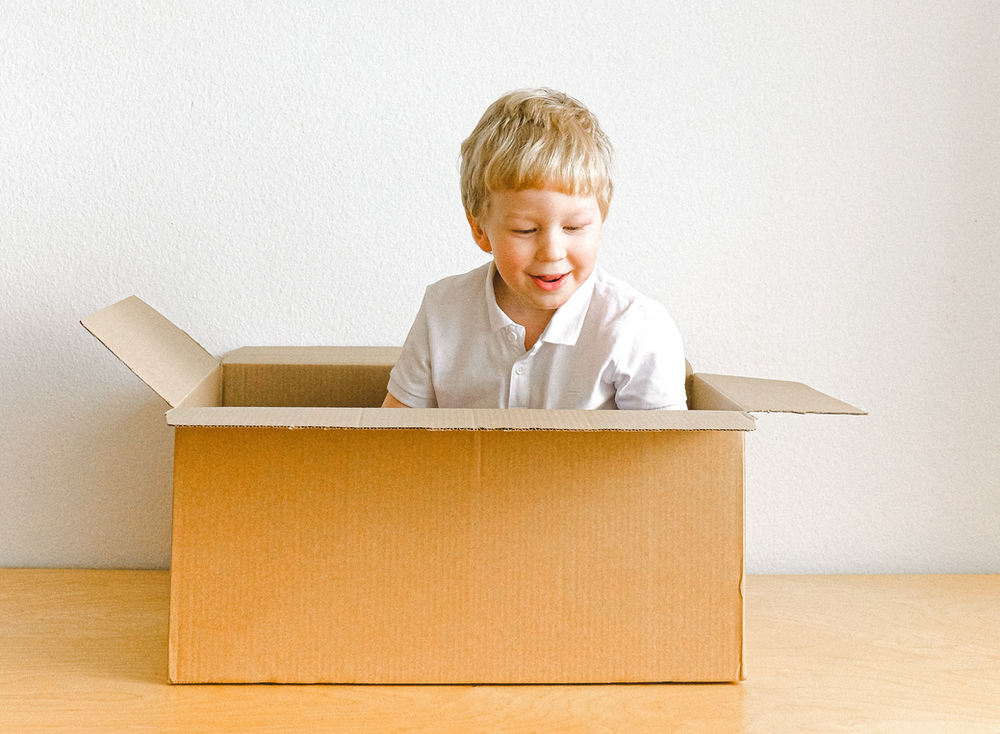Moving is already a stressful job in itself and there is a lot to take into consideration. One of the biggest things you need to plan for is how the move is going to impact those who are closest to you – your children and pets. Here is a list of five tips for moving with kids and five tips for moving with pets that will hopefully help relieve some stress during your next move!
MOVING WITH KIDS

1. Discuss the move with your kids as soon as possible
Talking about the move is the best way to prepare your children for it. Once the decision is final, gather together for a family meeting, announce the news, and explain why it is best for your family. To help encourage your children to talk about their feelings, you should tell them your own thoughts and feelings about moving. The worst thing you could do is wait to tell them, as your kids need time to process the information and begin to prepare for the change.
2. Continue to be positive
While moving is stressful, try not to let the stress get to you. If you appear to be nervous and stressed out, your kids will too. Be as enthusiastic and optimistic as you can. To help ease their minds, tell them about all the new adventures that are in store for your family; odds are, they will start to get excited too.
3. Involve your kids in any way you can
Your children will most likely feel better about moving if they are involved in the process. Give them opportunities to help whenever possible. Some ways to get them involved are letting them pack up a small box of their favorite toys, bringing them along while house-hunting, or allowing them to choose the paint color for their new bedroom. These may seem quite simple, but they will make your children feel special and get them more excited for the move.
4. Learn more about your new city together
If you are moving to a new city, you are probably pretty anxious yourself, and chances are, your children are anxious to learn about the new city as well. Sit down and learn about your new house together, their new school, and the city that you will soon be calling home. Look up exciting places and activities that your family will be able to discover, like zoos, parks, playgrounds, and local events. The more they know what to expect, the easier it will be for them to adapt.
5. Help them prepare for their goodbyes
Depending on how old your children are, the most difficult part of moving will likely be the goodbyes. With technology these days, it is much easier to stay in contact with each other, and you should remind your children of this frequently. Tell your younger children that they can easily send letters and pictures to their friends. If your children are old enough, social media is a great way to keep in contact with those who do not live near us. Having a farewell party is a great way to give your children some closure. Make a list with your children of the people and places they want to see before moving, since knowing they will have a chance to say goodbye may help ease their minds.
MOVING WITH PETS

1. Schedule an appointment with your vet
You should bring your pet into the vet a few weeks before your move to ensure all his or her vaccinations are up to date. This is also a great time to ask for a copy of medical records. If you are moving across state lines, you may need a Certificate of Veterinary Inspection/Interstate Health Certificate, so be sure to ask your veterinarian for this, if necessary.
2. Update your pets’ tags
Since your pet is going to be introduced to new and unfamiliar places, it is extremely important that your pet is wearing the proper ID and license tags. If your pet were to get lost, it is crucial that the tags have the most up-to-date contact information in order to be reunited with your family.
3. Separate your pet from moving day craziness
Moving day brings a constant flow of visitors and open doors, which is not only stressful on your pets, but could also be dangerous, if they were to sneakily run out the door and become lost. It is best to keep them in a safe, quiet space, such as a spare bedroom or a crate, until everything is packed up.
4. Plan your travel to be pet-friendly
Before heading off for your new house, spend some time researching the safest travel options for your pets. The Humane Society of the United States has a great article discussing travel with pets. If you need to plan for overnight stays, check out BringFido.com and/or PetsWelcome.com to view a list of hotels that accommodate guests with pets, including birds, fish, and exotic animals.
5. Help your pet become comfortable in your new home
While it may be tempting to give your pets free reign to explore your new home on their own, it is best to get them accustomed to one room at a time; this is especially true with cats. Begin with the room that has their food, water, litter box, and favorite toys. Once they begin to settle into their new environment, you can slowly introduce them to other parts of the house.

 Renters Insurance: Everything You Need to Know
Renters Insurance: Everything You Need to Know
Leave a Reply